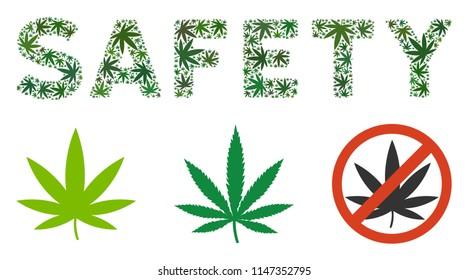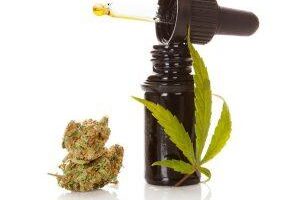In the ever-evolving landscape of cannabis usage, where the once-taboo leaf has blossomed into a multi-faceted industry, the conversation surrounding safety has emerged as a pivotal topic. From medicinal applications to recreational use, understanding the intricacies of cannabis consumption is essential for both newcomers and seasoned users alike. As more people explore its potential benefits, the need for informed practices and a keen awareness of responsible consumption has never been more critical. This article aims to illuminate the principles of cannabis safety, offering insights that empower individuals to make educated choices in a world where knowledge is the key to enjoying this remarkable plant responsibly. Whether you’re contemplating your first experience or seeking to deepen your understanding, join us as we navigate the essential elements of cannabis safety together.
Table of Contents
- Understanding the Risks: A Comprehensive Overview of Cannabis Use
- Navigating Dosage: Guidelines for Responsible Consumption
- Safe Storage Practices: Protecting Your Products and Loved Ones
- Legal Considerations: Ensuring Compliance and Awareness in Your Area
- Q&A
- Concluding Remarks
Understanding the Risks: A Comprehensive Overview of Cannabis Use
Cannabis use carries certain risks that warrant careful consideration. While many users report positive experiences, it’s essential to recognize that potential negative effects can vary widely among individuals. Contributing factors include dosage, method of consumption, and individual health conditions. Awareness of these risks helps users make informed decisions:
- Cognitive Impact: Impairment in memory, attention, and decision-making can occur, particularly in inexperienced users.
- Dependence: Regular use can lead to dependence, with withdrawal symptoms such as irritability and insomnia.
- Respiratory Issues: Smoking cannabis can irritate the lungs and exacerbate breathing problems.
Additionally, understanding the interaction of cannabis with other substances is critical for safety. Cannabis can enhance or alter the effects of other medications, which may lead to unintended consequences. The table below outlines common interactions and their potential impacts:
| Substance | Interaction |
|---|---|
| Alcohol | Increased impairment and sedation |
| Antidepressants | Altered mood and increased side effects |
| Opioids | Enhanced pain relief but higher risk of overdose |
Navigating Dosage: Guidelines for Responsible Consumption
Understanding the right dosage is essential for an enjoyable and safe cannabis experience. Start low and go slow is a mantra to live by when trying new products or varying your dosage. Begin with a small amount, especially if you are new to cannabis or trying a different strain or method of consumption. This gradual approach allows you to gauge how your body responds without overwhelming effects. Some key points to keep in mind include:
- Type of Consumption: Different methods (smoking, edibles, oils) have varying onset times and effects.
- Individual Tolerance: Each person’s body reacts differently, so personal factors like weight, metabolism, and previous experience must be considered.
- Product Potency: Always check the label for THC and CBD concentrations, and remember that edibles can take longer to kick in.
To further assist with your decision-making, a simple chart can help clarify effective dosages:
| Consumption Method | Starting Dose | Onset Time |
|---|---|---|
| Smoking/Vaping | 1-3 puffs | Immediate |
| Edibles | 2.5-5 mg THC | 30-90 minutes |
| Tinctures | 2.5-5 mg THC | 15-45 minutes |
Tracking your dosage and effects can also lead to a safer experience. Consider keeping a journal to note what you consume, the dosage taken, and how it makes you feel. This practice fosters a better understanding of your preferences and helps you adjust future dosages accordingly. With mindfulness and consideration, navigating your cannabis journey can be both rewarding and safe.
Safe Storage Practices: Protecting Your Products and Loved Ones
Adopting effective storage practices is crucial to ensure the safety of both cannabis products and your loved ones. It’s essential to keep these items out of reach of children and pets. Consider employing the following strategies:
- Lockable Containers: Invest in a secure, lockable container specifically designed for storing cannabis. This prevents unauthorized access and keeps your products discreet.
- Child-Resistant Packaging: Always use child-resistant bags and boxes, which are often a requirement for retail cannabis products.
- Climate Control: Store cannabis in a cool, dark place to maintain its quality and potency. Avoid areas with high humidity or direct sunlight.
Additionally, labeling your products accurately can help prevent accidental ingestion or misuse. Consider using clear, informative labels that indicate the contents, dosage, and any essential safety information. Implementing a simple storage guide can further enhance safety protocols. Below is a reference table to illustrate best practices:
| Storage Method | Benefits |
|---|---|
| Glass Containers | Creates an airtight seal, preserves freshness. |
| Sealed Vaccum Bags | Reduces oxidation and protects from moisture. |
| Cool, Dark Shelves | Helps maintain potency, avoiding degradation. |
Legal Considerations: Ensuring Compliance and Awareness in Your Area
When it comes to cannabis safety, understanding the legal landscape is paramount for any individual or business involved in its production, sale, or consumption. With regulations varying significantly by region, it is essential to stay informed about local laws that govern cannabis use. Here are key areas to focus on to ensure compliance:
- Licensing Requirements: Verify whether you need a specific license to cultivate, distribute, or sell cannabis.
- Age Restrictions: Familiarize yourself with the legal age for cannabis consumption and ensure compliance.
- Labeling and Packaging: Adhere to regulations concerning product labeling, which often include warnings and dosage information.
- Advertising Regulations: Be aware of the restrictions on marketing cannabis products, especially to minors.
Moreover, public awareness and community education play a vital role in promoting safe cannabis use. By fostering an environment where individuals understand the implications of their choices, we can mitigate risks associated with misuse. Consider the following strategies for raising awareness:
- Workshops and Seminars: Organize community events to discuss cannabis safety and legal issues.
- Educational Materials: Distribute brochures or digital content outlining safe usage practices and legal rights.
- Collaborations: Partner with local health organizations to create informative campaigns that promote responsible usage.
| Legal Aspect | Considerations |
|---|---|
| Licensing | Confirm state and local requirements before starting a business. |
| Public Consumption | Understand where consumption is allowed to avoid fines. |
| Home Cultivation | Check regulations on growing plants for personal use. |
Q&A
Q&A on Cannabis Safety: Insights for Responsible Use
Q: What does “cannabis safety” really mean?
A: Cannabis safety refers to the practices and knowledge that help individuals use cannabis in a way that minimizes risks and maximizes positive experiences. This includes understanding dosage, recognizing one’s own tolerance levels, being aware of potential interactions with other substances, and knowing the legal regulations surrounding cannabis use in your area.
Q: Are there specific safety tips for new cannabis users?
A: Absolutely! For newcomers, it’s essential to start low and go slow. Begin with a small dose and wait to see how it affects you before consuming more. Choose products with clear labeling and have a trusted source or knowledgeable dispensary staff guide you. It might also be helpful to use cannabis in a safe, familiar environment with supportive friends.
Q: What are the signs of cannabis overconsumption?
A: Overconsumption can vary from person to person, but common signs include extreme lethargy, anxiety, confusion, rapid heart rate, or nausea. If you experience any of these symptoms, it’s helpful to find a calm space, hydrate, and avoid additional consumption until you feel normal again.
Q: How can one ensure product safety when purchasing cannabis?
A: Look for products that have been lab-tested for potency and contaminants. Reputable dispensaries should provide lab results for their products, detailing levels of THC, CBD, and any potential impurities. Always be wary of products without proper labeling or from unverified sources.
Q: Can using cannabis affect my ability to drive?
A: Yes, cannabis can impair your motor skills and reaction time, much like alcohol. It’s crucial to avoid driving or operating heavy machinery while under the influence. If you’ve consumed cannabis, consider waiting until you’re sober or using alternative transportation options.
Q: Is it safe to mix cannabis with alcohol or other substances?
A: Mixing cannabis with alcohol can amplify the effects and increase the likelihood of negative experiences, including heightened anxiety or nausea. Each individual reacts differently, so it’s wise to approach combinations with caution and perhaps avoid them altogether until you understand your own limits.
Q: What should I do if I have a bad reaction to cannabis?
A: If you have a bad reaction, stay calm and remind yourself that the effects are temporary. Find a quiet space to relax, hydrate, and let the experience pass. If the situation worsens or feels threatening, seeking medical assistance is advisable. Professionals can provide support and help ensure your safety.
Q: Are there any long-term safety concerns related to cannabis use?
A: While many people use cannabis without issues, long-term or excessive use can lead to dependence, cognitive impairment, and other psychological effects. Staying informed about these risks and being mindful of your usage can help mitigate potential long-term impacts.
Q: How can I stay informed about cannabis safety?
A: Engaging with reputable sources, including public health organizations, cannabis education platforms, and social health professionals, can keep you updated. Participating in community forums or workshops can also provide further insights into safe practices and emerging research in cannabis safety.
Remember, staying informed and being mindful of your consumption can help ensure a safe and enjoyable cannabis experience for all users.
Concluding Remarks
As we conclude our exploration into the multifaceted world of cannabis safety, it becomes clear that knowledge is the cornerstone of responsible use. Whether for medicinal purposes or recreational enjoyment, understanding the nuances of cannabis—from dosage to storage, and from legal considerations to potential interactions—is essential for fostering a safe experience.
In this evolving landscape, staying informed is your greatest ally. As laws change, research develops, and public perception shifts, cultivating awareness will empower you to make wise choices and promote a culture of safety. Remember, the journey with cannabis is as personal as it is collective, and when approached with respect and mindfulness, it can not only enhance well-being but also enrich our communities.
Thank you for joining us on this enlightening path. May your knowledge flourish, and may safety always guide your choices.



